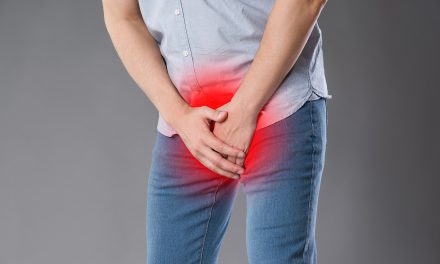The prostate gland is a small, walnut-sized structure that plays a crucial role in the male reproductive system. Positioned just below the bladder and surrounding the urethra, the tube through which urine exits the body, the prostate gland is responsible for producing seminal fluid, which nourishes and transports sperm. As men age, it’s common for the prostate gland to grow larger, a condition known as benign prostatic hyperplasia (BPH), or simply enlarged prostate.

Enlargement of the prostate can lead to a variety of urinary symptoms, as it may place pressure on the urethra and interfere with normal urine flow. To address the discomfort and complications that may arise from prostate enlargement, several treatment options are available, ranging from medications that help shrink the prostate or relax muscles to more invasive procedures like surgery. Furthermore, lifestyle adjustments can contribute to managing the symptoms, and emerging treatments continue to evolve, providing a wider spectrum of potential relief for affected individuals.
Key Takeaways
- The prostate gland is below the bladder and surrounds the urethra, contributing to semen production.
- Prostate enlargement can impede urine flow and requires a range of treatment methods.
- Addressing prostate health concerns promptly with a healthcare provider can optimize outcomes.
Anatomy of the Prostate Gland
The prostate gland is a key component of the male reproductive system, integral to urinary function and reproductive capabilities. Its structure and location are critical for its function.
Location and Structure
The prostate is situated beneath the bladder and in front of the rectum, enveloping the first part of the urethra. Structurally, the prostate is often compared in size to a walnut, demonstrating its compact nature. It is comprised of glandular tissues that are important for the secretion of fluids and connective tissues that help in the overall support and structure (Cleveland Clinic). Organizationally, the gland is encased in a fibrous capsule and is divided into different zones and lobes which influence its function and the impact of diseases on these regions (Kenhub).
Function and Importance
Functionally, the prostate gland plays a pivotal role in the male reproductive system. It produces fluid that accounts for a significant portion of semen, the carrier for sperm. This seminal fluid helps in nourishing and protecting sperm during its journey through the female reproductive tract. The muscles of the prostate also facilitate the propulsion of semen through the urethra during ejaculation (Verywell Health). Beyond its reproductive functions, the prostate’s proximity to the urethra means it is integral to urinary health, as changes in the size or health of the prostate can influence urination.
Understanding Prostate Enlargement
The prostate gland, subject to enlargement in many men as they age, primarily concerns two main conditions: benign prostatic hyperplasia (BPH) and its causative factors. Recognizing the symptoms and understanding the causes are crucial steps toward effective management.
Benign Prostatic Hyperplasia
Benign Prostatic Hyperplasia (BPH) is a non-cancerous enlargement of the prostate gland, typically manifesting in men as they grow older. Patients experience symptoms such as frequent urination, difficulty starting urination, weak urine stream, or the feeling of incomplete bladder emptying. The prostate’s role in semen production becomes impeded as it enlarges, thereby pressing against the urethra and affecting urinary functions.
BPH is also commonly referred to as prostate gland enlargement. It’s estimated that about half of men by age 60 and as many as 90% by age 85 will experience symptoms of BPH. Although not malignant, the condition can greatly impact one’s quality of life and may require treatment, which can range from medications to reduce prostate size, such as alpha blockers, to surgical options in advanced cases.
Causes of Prostate Growth
The growth of the prostate gland is believed to be driven by hormonal changes as men age. Testosterone, the primary male hormone, and its byproduct, dihydrotestosterone (DHT), play significant roles in prostate growth. DHT is especially potent in stimulating the growth of prostate cells.
- Hormonal Shifts: The balance between testosterone and estrogen changes as men age, which might contribute to BPH.
- Cellular Changes: Aging also brings cellular changes in the prostate that may lead to an increase in its size.
While the exact mechanisms leading to an enlarged prostate remain unclear, these hormonal and cellular factors are recognized for their contributions. Identifying the underlying cause is essential for tailoring appropriate treatment strategies.
Signs and Symptoms of Enlargement
Enlargement of the prostate gland, medically termed as benign prostatic hyperplasia (BPH), manifests through various urinary and sexual symptoms. Identifying these signs is crucial for early intervention and management.
Urinary Symptoms
Enlargement of the prostate commonly leads to disruptions in urination. Men may experience:
- Increased frequency: An urgent need to urinate more often, especially at night, is a symptom often associated with BPH.
- Hesitancy: Difficulty in initiating urination may occur as the enlarged gland obstructs the urinary flow.
- Weak stream: The urine flow may become weak or interrupted, where the stream stops and starts, while urinating.
- Dribbling: Post-void dribbling, where leakage of urine continues after finishing urination, is another indicative symptom.
Sexual Dysfunction
Alongside urinary issues, prostate enlargement can affect sexual function:
- Erectile dysfunction: Difficulty in achieving or maintaining an erection can be a concern for some men with an enlarged prostate.
Diagnostic Procedures

Accurate diagnosis of prostate enlargement relies on a combination of methods, allowing doctors to determine the best treatment approach. Below are specific diagnostic procedures typically employed to assess the prostate gland.
Physical Examination
A doctor may begin with a digital rectal exam (DRE), where they insert a gloved, lubricated finger into the rectum to palpate the prostate. The size, shape, and texture of the prostate can provide important information about its condition.
Laboratory Tests
Two key laboratory tests are utilized when diagnosing an enlarged prostate. A PSA (prostate-specific antigen) blood test measures the level of PSA in the blood, which can be elevated in men with an enlarged prostate. Additionally, a urine test can check for signs of infection or blood.
Imaging Studies
Imaging studies further aid in the diagnosis. A transrectal ultrasound can create images of the prostate, helping in the assessment of its size and ruling out other conditions. If needed, a biopsy may be performed to gather small tissue samples for analysis, although it is less common for benign enlargement diagnosis.
Medical Treatment Options
When addressing an enlarged prostate, several medical interventions can be considered, each varying in complexity and invasiveness. Physicians may prescribe medications, offer minimally invasive therapies, or in more severe cases, advise surgical interventions.
Medications
There are two primary classes of medications used to alleviate symptoms of an enlarged prostate: alpha-blockers and 5-alpha-reductase inhibitors. Alpha-blockers, such as tamsulosin and alfuzosin, work by relaxing the muscles around the prostate and bladder neck to facilitate easier urination. On the other hand, 5-alpha-reductase inhibitors, including dutasteride and finasteride, shrink the prostate over time by blocking hormones that cause prostate growth.
Minimally Invasive Therapies
For those needing more intervention than medication can provide, but wish to avoid conventional surgery, minimally invasive therapies offer a middle ground. Techniques such as transurethral microwave thermotherapy, which applies heat to remove prostate tissue, or transurethral needle ablation, which uses radio waves, have grown in popularity. A particularly novel method is the FDA-approved prostate artery embolization, which reduces prostate size by decreasing its blood supply.
Surgical Interventions
If medications and less invasive treatments are insufficient, surgical interventions may be necessary. A common type is Transurethral Resection of the Prostate (TURP), where a scope is inserted through the penis to remove prostate tissue obstructing urine flow. For severe cases, a prostatectomy, the partial or complete removal of the prostate, may be performed. This surgery carries a higher risk of complications and is typically reserved for the most problematic cases.
Potential Complications and Risks

When considering treatment for an enlarged prostate, it is crucial to be aware of potential complications and risks. These can range from issues during the treatment process to post-surgical concerns.
General Risks of Treatment
Treatments for an enlarged prostate, such as surgery or medication, carry general risks. These risks include, but are not limited to, urinary tract infections (UTIs), which may occur if bacteria enter the urinary tract. Procedures involving the insertion of a catheter might increase the risk of infection. Additionally, treatments may sometimes lead to bladder damage due to the invasive nature of surgical procedures. Another point of concern is urinary incontinence, where patients might experience involuntary loss of bladder control. This side effect can range from temporary to long-lasting, depending on the individual and the chosen treatment method.
Post-Operative Concerns
Following surgery for prostate enlargement, patients may face several post-operative concerns. It’s not unusual for patients to need a catheter temporarily post-surgery, leading to possible discomfort or additional risk of urinary tract infections. In some rare cases, kidney damage can occur if urinary flow from the bladder remains blocked for an extended period, causing back pressure. Monitoring and follow-up care are critical to managing and mitigating these post-operative risks.
Lifestyle Considerations

Making thoughtful lifestyle adjustments can have a significant impact on managing the symptoms of an enlarged prostate. Key areas to focus on include dietary choices and maintaining an active lifestyle that supports pelvic health.
Diet and Nutritional Factors
A balanced diet plays a crucial role in managing prostate health. Men experiencing symptoms of an enlarged prostate may benefit from:
- Reducing caffeine and alcohol intake: These substances can irritate the bladder and exacerbate symptoms.
- Increasing fluid intake during the day: This helps to dilute urine, though it’s wise to limit fluids in the evening to reduce nocturia.
- Incorporating fruits and vegetables: These are high in antioxidants and can aid in overall health.
- Including soy and green tea: Some studies suggest that these may help support prostate health.
Physical Activity and Pelvic Health
Regular exercise is essential for maintaining good health and can specifically aid in improving prostate health by:
- Strengthening the pelvic floor: Pelvic floor exercises, also known as Kegel exercises, can help improve urinary control.
- Engaging in physical activity: Regular exercise can improve symptoms and overall health. It’s recommended to aim for at least 30 minutes on most days of the week.
Emerging Treatments and Innovations

In the landscape of prostate treatment, innovative methods are continuously evolving. These developments range from cutting-edge surgical procedures to new pharmaceutical options, and are supported by rigorous clinical trials.
Advanced Surgical Techniques
New surgical treatments for an enlarged prostate, such as Holmium Laser Enucleation of the Prostate (HoLEP), are proving to be effective. HoLEP is a minimally invasive procedure where a laser is used to remove obstructive prostate tissue. Another advancement, the Rezūm treatment, utilizes steam to ablate prostate tissue and is gaining popularity because it preserves sexual function while effectively reducing BPH symptoms.
Pharmaceutical Developments
The realm of drugs and medicines for prostate enlargement is witnessing the introduction of innovative drugs aimed at reducing symptoms and improving quality of life. Research shows that certain new medicines can markedly reduce the size of the prostate and the level of discomfort, avoiding the need for surgery. Clinical trials are essential in determining the efficacy and safety of these pharmaceuticals.
Clinical Trials
Clinical trials play a pivotal role in the advancement of treatments. They are essential for testing the safety and effectiveness of new treatments, such as drugs that target specific receptors within the prostate. The outcomes of clinical trials can lead to the authorization of new treatment methods, offering more options for patients struggling with an enlarged prostate.
When to See a Doctor

Men experiencing urinary symptoms or changes in urinary habits may need to consult a doctor, especially if such symptoms are affecting their quality of life. An urologist is a specialist who can provide expert advice on prostate health.
Identifying Serious Symptoms
Men should seek immediate medical attention if they experience:
- Difficulty starting urination along with a weak stream, or a stream that stops and starts.
- Painful urination or presence of blood in urine, which could signal a serious condition.
- Frequent urination, especially at night (known as nocturia), that significantly disrupts sleep.
Experiencing sudden inability to urinate, discomfort in the pelvic area, or severe urinary tract infection symptoms are indicators of the need for urgent medical evaluation.
Regular Screenings and Follow-Ups
Men over the age of 50 should discuss with their doctor the appropriateness of regular prostate screenings for early detection of prostate enlargement or other issues. Those with a family history of prostate problems or who are experiencing mild symptoms, such as slight changes in urinary habits, should also consider regular check-ups.
Patients already diagnosed with an enlarged prostate should adhere to their prescribed treatment plan and maintain regular follow-ups with their doctor to monitor the condition and adjust treatment as necessary.
Patient Resources

When facing an enlarged prostate, patients have access to a variety of resources. These include support networks and comprehensive educational materials to help manage and understand the condition.
Support Groups and Organizations
For individuals seeking community support, Mayo Clinic offers avenues to connect with others affected by prostate enlargement. Through their program, patients can find support groups where they can share experiences and coping strategies. Additionally, Harvard Health Publishing can be accessed for a broad spectrum of insights on the latest treatment options and research, helping individuals make informed choices alongside medical advice from a qualified clinician.
Educational Material
In terms of educational resources, patients will find an array of materials through reputable medical organizations. Mayo Clinic provides educational material that thoroughly explains the function of the prostate gland and the various treatments available for enlargement. It is essential for patients to always seek medical advice from healthcare providers, and use these resources to complement the guidance of their qualified clinician.
Frequently Asked Questions

The following questions cover the essentials of prostate gland location, issues, and advancements in treatments for enlargement.
What is the most effective treatment for an enlarged prostate?
The effectiveness of treatments for an enlarged prostate, also known as benign prostatic hyperplasia (BPH), varies by individual. Common approaches include medications such as alpha-blockers, minimally invasive procedures like transurethral resection of the prostate (TURP), and laser therapies. The choice of treatment depends on several factors, including the severity of symptoms, the size of the prostate, and the patient’s overall health.
How do prostate gland problems manifest and what treatments are available?
Prostate gland problems can present with urinary symptoms such as difficulty starting urination, weak urine stream, and frequent urination. Treatment options range from lifestyle changes and medications to surgical procedures. Information on symptoms and treatments can be found in greater detail on the NIDDK website.
Can you explain the function of the prostate gland?
The prostate gland is part of the male reproductive system. It produces prostate fluid, an essential component of semen. The prostate surrounds the urethra at the bladder neck, contributing to urinary control. For a comprehensive overview, the Mayo Clinic offers detailed information.
How can I find out if my prostate gland is enlarged?
An individual may suspect an enlarged prostate if experiencing urinary issues such as increased frequency or urgency. A healthcare provider can confirm the condition through a digital rectal examination (DRE), ultrasound, or blood tests to measure prostate-specific antigen (PSA) levels. Mount Sinai’s resource elaborates on diagnosis and self-care tips such as double voiding.
Is it possible for an enlarged prostate to return to its standard size without surgery?
In some cases, lifestyle changes and medication can alleviate the symptoms of an enlarged prostate and halt its progression, but significant reduction in size without surgery is less common. Herbal remedies like saw palmetto have been used, though scientific evidence on their efficacy varies.
What are the latest advancements in treating an enlarged prostate?
Recent advancements in treating an enlarged prostate include new forms of minimally invasive surgeries, improvements in laser therapy, and novel medications. Research is ongoing, and Medical News Today provides updates on emerging treatments and the management of BPH symptoms.















